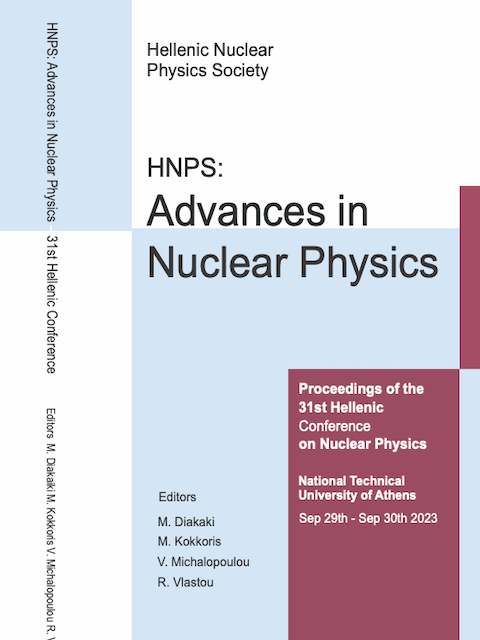An Improved Technique for Monitoring Radon Progeny in Ambient Air
Περίληψη
Radon progeny fluctuation outdoors has been widely studied for decades, with increasing interest in the last few years towards the investigation of possible correlation with atmospheric parameters and various environmental processes. Within this context, Bi-214 activity in ambient air has been systematically monitored at the Nuclear Engineering Laboratory of NTUA for several decades. However, the measuring technique and data analysis demonstrated various shortcomings. Currently, the measuring system has been upgraded and a new approach has been implemented for signal analysis. Measures were also taken to reduce background radiation and enhance the signal. Analysis of the collected data deemed challenging because of the effect of precipitation to the detected Bi‑214; efforts were made to monitor and interpret this effect. Analysis of experimental data over a period of ~6 months together with data for rain events confirmed that precipitation led to elevated signals. Furthermore, the results pointed towards a possible correlation between rain rate and Bi-214 count rate, indicating the need for further work on the subject. When concluded, this study will hopefully contribute to the ongoing investigation of radon progeny fluctuations in atmospheric air.
Λεπτομέρειες άρθρου
- Πώς να δημιουργήσετε Αναφορές
-
Kanoutos, K., Petropoulos, N., & Anagnostakis, M. (2024). An Improved Technique for Monitoring Radon Progeny in Ambient Air. Annual Symposium of the Hellenic Nuclear Physics Society, 30, 173–176. https://doi.org/10.12681/hnpsanp.6291
- Τεύχος
- Τόμ. 30 (2024): HNPS2023
- Ενότητα
- Poster contributions

Αυτή η εργασία είναι αδειοδοτημένη υπό το CC Αναφορά Δημιουργού – Μη Εμπορική Χρήση – Όχι Παράγωγα Έργα 4.0 4.0.






